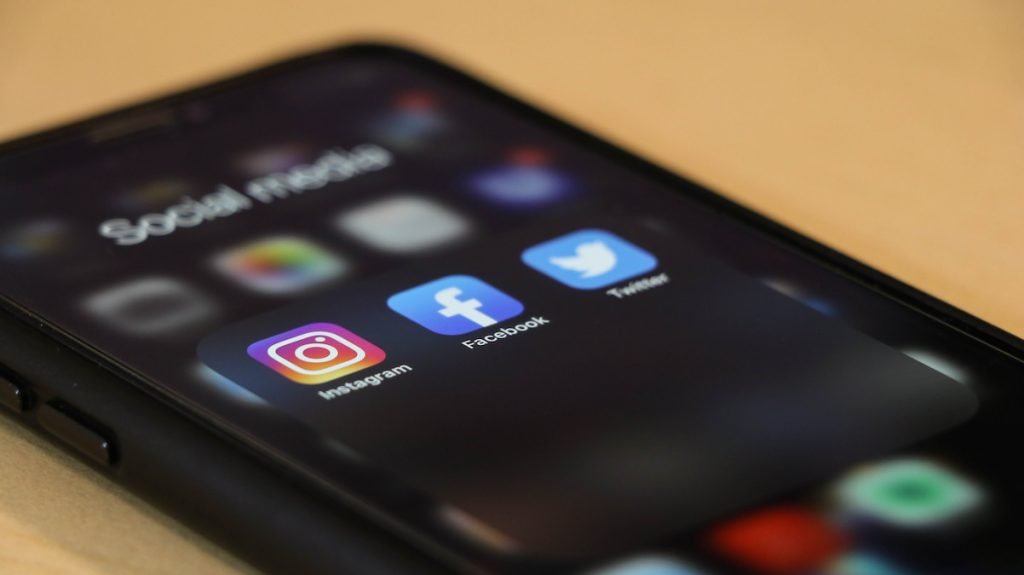Prehistoric Times
It seems that no matter where I go, I tend to overhear someone remembering the “good old days”. When you hear that phrase, it’s often assumed to be coming from someone referencing times that were 30, 40, over even 50 years ago. But, in these cases, it’s usually someone talking about times that took place just 15 or 20 years ago. I know it’s hard to think of the early 2000s being referred to as “good old days”, but for many, that’s exactly what it was.
Think about it. In 2005, HDTV was still coming into its own as the viewing method of choice while online video was just starting to take off globally thanks to the launch of YouTube. It was a time when Blockbuster was still a staple of American society and Netflix and Hulu weren’t even close to what they’d become. That was only 17 years ago. Now, go back 20 or more years, and think about how much has changed.
The 1990s were pretty much prehistoric times when it comes to modern technology. Physical encyclopedias were still needed to do reports. Playing games with friends usually meant having to go to the same house. People born in the 1980s and early 1990s are often labeled as Generation Y. But when you mull it over, there’s a different letter that better suits us: N.
No matter where you go or what you do, nostalgia seems to be a hot topic; longing for the days of gathering around the TV to play the incredible 3D graphics that the Sony PlayStation introduced to us in 1994. And just think about the first time you heard the iconic “You got mail!” when logging onto the internet with America Online (AOL).
You couldn’t order your food online, you only had a limited number of channels to watch, and ordering a pay-per-view event or movie meant calling your cable company to get a signal sent to your house. The list goes on and on.
Every generation has gone through changes in lifestyle due to advances in technology. But there’s no denying that no generation has grown with more changes in such a short amount of time than those born in the 80s and 90s. The last of an era where not having internet in the home was more common than not at a young age.
Welcome to the World Wide Web
Here’s a fun fact that many may not know: the internet has been around since the 1960s as a way for government researchers to share information. It wasn’t until 1989 that the World Wide Web as we know it would be invented by European Organization for Nuclear Research (CERN) employee Tim Berners-Lee. Four years later, on April 30, 1993, CERN would put the Web into the public domain. We could go into the full history of the internet’s development and release, but that would take far too long for this.
For me, I was lucky. Because of my father’s profession, our household was one that quickly had internet access. But that didn’t make it any less intimidating to use. Even as a child, the thought of signals being sent electronically to get something returned was astounding. It was just to believe it was even possible. Email started to change the game in how we communicated, and then instant messaging threw everything out the window.
No longer did people have to call to get a question answered. Now they could just type a message, send it, and get a reply almost instantly. Talk about having your mind blown.
And that was only the beginning of what was to come over the next handful of years. From there, a multitude of websites would start to appear along with various internet service providers (ISPs), looking to grab a share of the market. Remember Compuserve? What about Earthlink? Then there were the browsers like Netscape Navigator and Mosaic, just two of the early pioneers that accelerated the boom. It almost became a point where you were overwhelmed with everything just because of how new it was.
But that was just the tip of the iceberg.
If you thought the internet of the 90s was cool, that was nothing compared to what came in the early 00s. When it first entered the average home, connecting to the internet required a phone line that wouldn’t allow you to make any sort of calls if you wanted to remain connected.
“Mike, why did you kick me offline!” was something I heard a lot from my older sister when I was a kid. And usually, it was because I wanted to call a cousin or friend to play that day after school.
When I was online, though, all bets were off. It was in 1999 when I first got a taste of a hobby that would become an important part of my life for several reasons.
I have been playing games since I was three, but when I was nine, I experienced Quake III Arena. A game where I could play with other people across the world? Yes, please! I spent hours in the den of my home on the computer playing this game. No matter how good or bad – mostly the latter – I did, I always had a blast. It was still a novelty to me to be able to connect to a server and play a game like this with people I’d never met before.
Then came along two other titles that took up the bulk of my time, StarCraft and Heroes of Might & Magic III. Two more games that I was able to play online with other people who enjoyed the same things I did. It was revolutionary to me. It’s a feeling that isn’t lost on me whenever I load up a game to play online. I’m still in awe that I can simply boot up a game and play with others in minutes.
Moving to February 2002, my family had broadband cable internet installed via the now-defunct Adelphia. It was like we traveled through the wardrobe into Narnia. It didn’t take hours to download a single file, it was done in minutes or even seconds. Playing games online became quicker and easier. And we could even use the phone at the same time!
By 2007, nearly half of American households with internet access used a broadband connection. That has only grown over the years, yet it’s still not to a point where most of the nation has a broadband connection. And many that do, don’t have a reliable one due to the poor nature of the current infrastructure. But that’s a discussion for another time and another place.
Back to downloading. The introduction of broadband saw the idea of downloading movies, music, and games really take off. From Napster to Limewire and the other various programs, it was easier than ever to get the digital products you wanted without even paying for them. Piracy became a major issue during this time and only got bigger as more people got access. According to the National Economic Research Associates, over 126 billion episodes of US-produced TV shows are pirated each year. Music suffers due to what’s known as stream-ripping where songs are downloaded from platforms like YouTube or Spotify for permanent listening on your device. Of the major mediums, software has seen the best turnaround as the years have passed with just 16% of software in the United States reportedly being used without permission or purchase.
I’d be lying if I said I never dipped my toes into the open waters of piracy. It’s all I would do to get my games when I was a teenager and into my early 20s before I started making money. I wanted to play the latest games, but I couldn’t afford to drop $60 each time something was released. I did it so much that I even received emails and letters from my ISP warning me that it had noticed an extremely high volume of data transfers that would signal a likely case of pirating. To say that scared the hell out of 21-year-old Mike would be an understatement.
With the ability to pirate almost whatever you want whenever you want, it makes it a lot easier to watch, listen, or play what you loved years ago. Another major reason for the continued nostalgia wave overtaking the younger population.
Handhelds Take Over

According to Pew Research Center, over 97% of the general population in America has a cell phone. Go back 15 years ago and that number drops significantly to 76%. Go back further, the number drops even more.
Cell phones back in the 90s were big, ugly blocks with long antennas that only certain higher-ups would have. They were such expensive and, in some cases taboo, devices that some didn’t believe they’d ever become the full-time replacement for the home phone. After all, it wasn’t until the 1980s that cordless phones became more common in American households.
Fast-forward to the late 90s and early 00s and you now see personal digital assistants (PDAs) become more popular. These devices, along with the older pager, allowed more streamlined work for professionals. It also took the idea of being “on call” to a whole new level. Something I noticed far too often at home.
My dad was a director of network and computer operations for a large regional healthcare network. I saw him go to work before the crack of dawn and not come home until after the sun had set. There were even times I’d go a day or two without seeing him because he was at work. I’m not saying that I never saw him because, to be honest, my relationship with my dad growing up is one of the things I feel the luckiest for. He rarely, if ever, missed a game or event I was in. However, that didn’t mean he wasn’t always busy. I often felt he did too much and didn’t know what taking a break was. A trait that I, unfortunately, acquired as I grew up.
But that’s beside the point here. What I remember vividly are his random pages or calls from work about one thing or another that required him to drop everything else. It was something that I remember not liking, especially if we were doing something together. Eventually, though, it became just another part of daily life whether we liked it or not.
At a moment’s notice, those with PDAs, pagers, and cell phones could be contacted by someone or something. It was the beginning of the era of always being connected.
Outside of personal communication, the video game industry was going through a transition of its own with the handheld marketplace. Not even a decade after nearly crumbling for good, the gaming industry was booming thanks to the success of Nintendo and, to an extent, Sega. With the success of the NES, Nintendo decided to take its shot at the handheld space with the release of the Game Boy in 1989. That was followed up in 1996 with the Game Boy Pocket; 1998 saw the release of the Game Boy Color.
The pocket was my first handheld. Then I got a Game Boy Color for Christmas in 1999 alongside Pokemon Silver. From then on, portable gaming became a major part of my gaming hobby. From the Game Boy Color to the Game Boy Advanced and beyond. There was nothing like going on a long road trip and playing your games almost the whole way. It was even better when you had your worm light, allowing you to play at night.
For the next decade-plus, handhelds both in gaming and cell phones continued to evolve at such a rapid pace that it became almost impossible to keep up.
Mobile Everything and Overwhelming Advances
By the time the mid-to-late 2000s hit, mobile devices became such commonplace that it felt like you were one of the odd ones if you didn’t have one. Everyone seemingly had a Motorola Razr, LG Rumor, T-mobile Sidekick, or something. You were a pariah if you didn’t have something that at least had a camera on it.
Enter me. While many I knew had a cellphone by 2003, I didn’t. I don’t remember ever even really asking for one. If I needed to have a phone, I would just borrow my mom’s. It wasn’t until I was almost 17, which is still young at that time, that I got a phone. And it wasn’t even because I had asked. My parents just came home one day with an LG VX4650 – a silver flip phone with a huge speaker. It was the first time I was always just a text or call away. But I better not dare go on the internet on it. I didn’t want to face the wrath of my parents when that bill with 30 seconds of online came.
That was in late 2006. Little did I know what was about to happen with technology within just the next three years. Hell, everything changed in just a couple of months’ time.
January 9, 2007. A date that everyone who’s even slightly into technology will always know and remember.
“This is a day I’ve been looking forward to for two-and-a-half years,” late Apple CEO Steve Jobs said that day.
“Today, we’re introducing three revolutionary products. The first one is a widescreen iPod with touch controls. The second is a revolutionary mobile phone. And the third is a breakthrough internet communications device.”
“Are you getting it?” he continued. “These are not three separate devices. This is one device.”
That was the introduction of the very first iPhone. A device that removed the buttons from the phone and replaced them with one of the largest and most responsive touchscreens at the time. Everything you could ever need was finally in the palm of your hand and looked like something people other than business professionals would carry around. Calling, messaging, emailing, reading the news, watching the latest videos, and paying bills. You name it, you were able to do it.
As I said, it was only a few months after I had just gotten my hands on my first cell phone. But that didn’t matter. Like with everything new, if you didn’t have the latest and greatest, you were nothing. It went from who had a cell phone to who now had a smartphone. If you could access the internet on your phone and download apps without any concerns – aside from the cost of the base data plan at the time – you were at the top of the mountain.
That right there is exactly how it’s been for this generation since birth. By the time you were able to get your hands on something, it was already obsolete and moving on to the next best thing. Whether it was phones, TVs, software, companies, or just the way of doing basic tasks like shopping. Everything was moving so fast that it became hard to keep up.
Despite only being in my early 30s, I often think about just how much I’ve seen happen in my lifetime. From 9-11 to the great recession to even the recent Coronavirus pandemic that crippled the world, I and everyone else around my age have lived multiple lifetimes worth of events in a short period. With technology, the advances are even more eye-popping.
Consider this: How long did it take to go from landing on the moon to cell phones becoming common in America? Now think about the gap between the internet only being accessible to most via a computer in your home or library to having everything you want in the palm of your hand. It’s incredible to think that the computers we have in our pockets are more powerful than what put men on the moon.
Advancements in technology like that are just part of the reason why it feels like there’s something new each day that you need to learn, download, or buy. And it doesn’t help when it’s plastered everywhere you look when you go online.
Social Media Mind Control

As smartphones got into the hands of more and more people, the rise of social media became too big to ignore. Friendster and MySpace may have been the biggest of the early boom before smartphones, but then came platforms like Facebook, Instagram, Twitter, and others that wanted you to do more. They wanted you to share what you were doing at the moment you were doing it.
And I don’t know if you noticed it or not, but it worked.
Millions upon millions of people – including myself – began posting everything they were doing. From eating at a restaurant to telling everyone what gym you were at, nothing was undocumented. A complete digital paper trail that can be followed and looked back on whenever you, or someone else, wanted. Privacy was a thing of the past. Everything started to be dictated by your social media presence because if you didn’t post about it, did it really happen?
One 2019 study from SlickText reported a single person checks their social media over 63 times per day. Daily use of your phone in general is about 2,300 touches per day or 839,000 per year, per person on average, according to Dscout.
The obsession we formed with our phones and social media became nothing short of mind control. Every thought we had ended up online, and social media even helped develop our thoughts around many topics regardless of where the information came from or if we did follow up reading on it. If it didn’t fit into short, digestible content, no one cared. It’s why platforms like Vine and its six-second videos became so popular. It took advantage of the shorter attention spans.
Myself, I got sucked in in a major way when I was in college. Everything I did, I felt I had to post about. Then that turned into endless scrolling and seeing what other people were doing. What did that lead to? A severe toll on my mental health.
I would see people go out with friends, go on trips, and post about all these things they were doing. For some reason, I let that bother me. I got jealous; I got depressed. I’d just scroll and scroll and scroll. I’d get sad about why I’m not doing those fun things or wonder why I wasn’t invited to some event that a number of other friends are at. Then I’d close the app only to open it again a short while later to do the same thing. I’m just one of the thousands who’ve done the same thing. It’s a terrible habit and one that’s extremely hard to break.
Even today I still get in those funks. I see people going on trips or buying new things and sharing them, and I get a major case of FOMO (fear of missing out). As I said, it’s a terribly hard to break habit.
But that’s all about falling into the social media trap. How does nostalgia fit into this? It’s what triggers engagement and elicits reactions from us. Seeing some random post about a show or movie you watched 15 or 20 years ago is much more likely to get you to react and respond to it than a simple post about, say, sushi.
That digital paper trail I mentioned early? That doesn’t help things either. It’s so easy to look back at what you were doing a decade ago that you don’t even have to actively think of the memory. Your digital footprint will remember it for you and flood you with everything about that moment in time. It’s an infinitely shareable past that will only grow as the years go by.
How Much Blame Goes To The Media?
While social media certainly has a lot to do with how nostalgic we’ve become, it’s not the only form of media to blame. A large amount of blame can arguably be placed on traditional media like movies, tv shows, and even video games.
I remember in 2010 when I got my first taste of DVR. Like many, I had to work but didn’t want to miss a show. For me, it was WWE Monday Night RAW. I came home that night, loaded up the show, and enjoyed it. But it was in a way I never experienced. I was able to skip every commercial break and zoom through all the downright terrible segments. It changed how I watched TV forever.
The only shows I watch live at this point are sports. Everything else is recorded and started later just so I can digest it how I like. Call me spoiled, but that’s the way I like it.
Now, we have streaming services from almost every major provider. It makes watching what you want easier than ever provided you pay all of the subscription fees. What’s more, is the fact that you can pay for these services and watch your shows or movies without ever needing to see an ad again. But because of that, the cost of the services is higher as well as the massive need for content that will get viewers not only engaged enough to watch but enough to get them talking about it online. Enter, once again, targeted nostalgia.
It seems like every time you turn around another remake or reboot is being announced. And while remakes have always been a part of media, it’s happening far more often than ever thanks to that need for content to fill the platforms. I like to think of it as “Direct to DVD” sequels but at a much greater scale. I mean, did the world really need a Hocus Pocus 2 or The Santa Clauses? No, but they were made anyway to capitalize on that nostalgia that a generation feels for those films.
I just recently found myself going back and rewatching That 70’s Show solely because I saw a trailer for That 90’s Show. I fall for it all the time, and it’s because of how it makes me feel.

With video games, I feel differently. We are in an era where new IPs are rarer than ever. AAA video games are very expensive to make, so studios are timider to try new things. Instead, what we get are remakes, remasters, and reboots of games that sold well in the past. After all, if it sold well once, who’s to say it won’t happen again?
I’ve hated the idea of remakes and remasters being the primary game releases. For me, the best place to get new efforts and innovations in some way has been in indie titles. Without having to answer to larger publishers, indie developers have more freedom to try new things that may or may not work. But at least they’re trying.
From larger studios, we’re getting games remade or remastered that aren’t even a decade old at this point: see, The Last of Us. It’s a great game, but did we need a remaster and a remake within nine years of its launch? No, we didn’t. But we got it anyway, and people bought it up.
This is where my nostalgia differs from others when it comes to video games specifically. I love my older games, but I prefer to relive them on the platforms they were originally released on. It’s why I still own a PlayStation, PlayStation 2, Nintendo 64, Sega Genesis, and several other classic consoles. When I want to escape and feel nostalgic for a game, I go back and play it how it was released. I’m not trying to imply I’m better than those who buy the remakes and remasters of the classic games, I’m just talking about what I enjoy. At the end of the day, we are all doing the same thing just in different ways.
But back to how much blame should be placed on the media. It’s ultimately a mixed bag. They are only taking advantage of the trends they see. If people weren’t so quick to gobble up anything that makes them think back to when they were younger, it’s highly unlikely mainstream media pushes things out to take advantage of it. Do they do it to a somewhat overbearing extent? Yes. Are we to blame? Yes.
Back to the Future: Why Can’t We Move On From Nostalgia?
Both throughout this writing and in my head, I’ve gone through a lot of what’s come down the pipeline over the years. But that leads to a major question: Why can’t we just move on?
Why do we constantly hearken back to the past? Why does nothing that feels new and fresh seemingly succeed? The quick answer is that we don’t allow it to.
Nostalgia is an escape from the current reality. Because for my generation and millions of other people, reality sucks. And that’s not because of what the older generations might say about young people today not wanting to work hard or knowing what “insert thing here” is like.
The reality is young adults today work harder than ever solely to make ends meet. The fact that I’ve, on average, had to hold three jobs at a time just to provide for my family shows just how bad it is. And I’m one of the lucky ones who was able to buy a reasonably priced home and get a reasonably priced vehicle. Others aren’t so lucky. That’s where escapism becomes a major point in our lives.
Being able to watch, play, or listen to something that brings back happy memories is just what we need to feel some sort of joy in between the moments of angst that seem to be neverending. It’s not just something you can “get over” or “suck up”. It helps us. It’s helped me. And I know it’ll continue to help years from now as the things that I enjoy age alongside me.
There’s a belief that change triggers nostalgia, which then sees its function as that sense of stability in our life. That’s a belief I agree with. With everything we’ve experienced, seen happen, and seen launched over the years, there’s never been a time to enjoy much of anything. I’ve said it once and I’ll say it until my face is blue, by the time you get remotely used to something, something “new and improved” is being put out. It’s just the way it is. But that’s why the memories of things are so ingrained in our minds. You likely had just a short time with that thing that made you so happy that it’ll stick with you forever. That’s never going to change.
Neither is nostalgia. Every generation — past, present, and future — experiences it in one shape or another. It’s just we happen to be living in an era where nostalgia is the only consistently good thing we have to enjoy. That said, looking into the past too much could stop you from ever enjoying what’s happening in the now or what you want to achieve moving forward. What do you want the world to become, and how do you want to leave your mark?
Those are the questions to look forward to answering, not back on years from now on how you’d do things differently.



